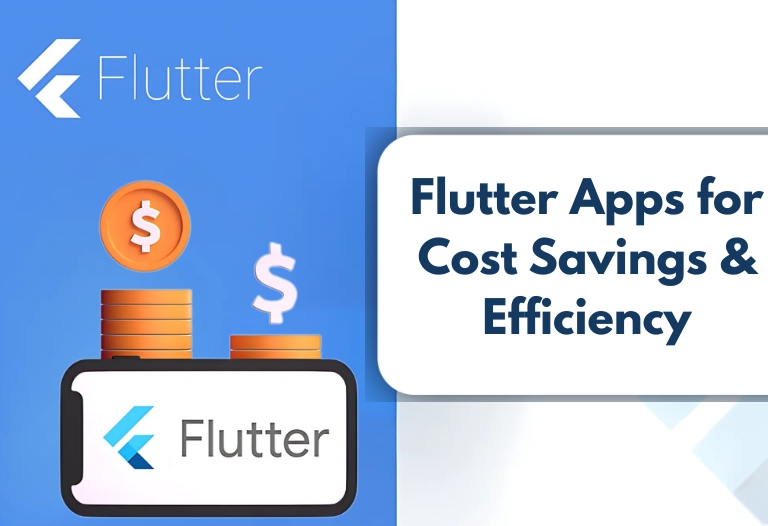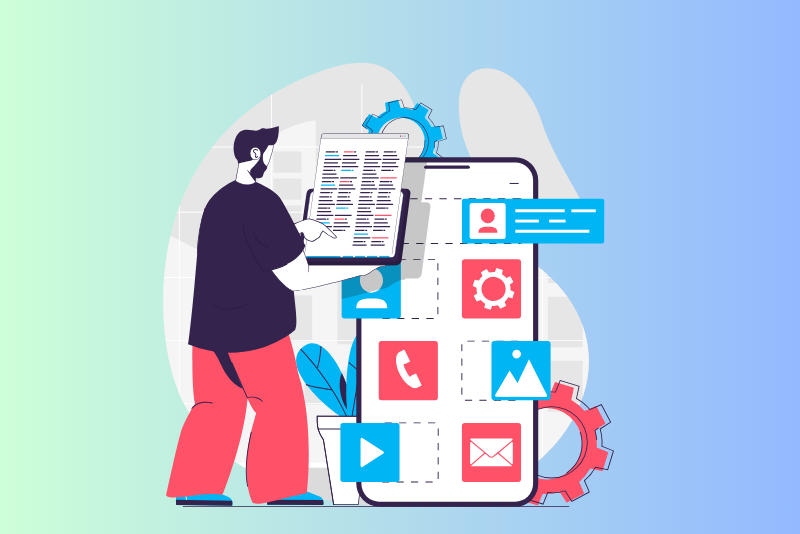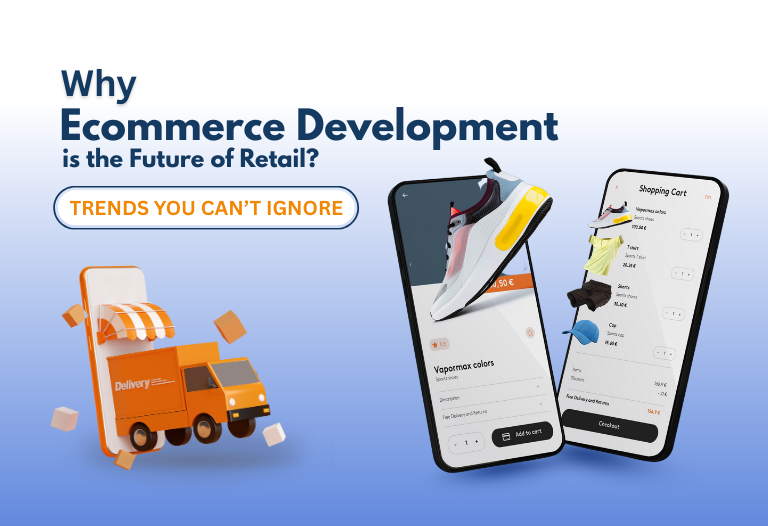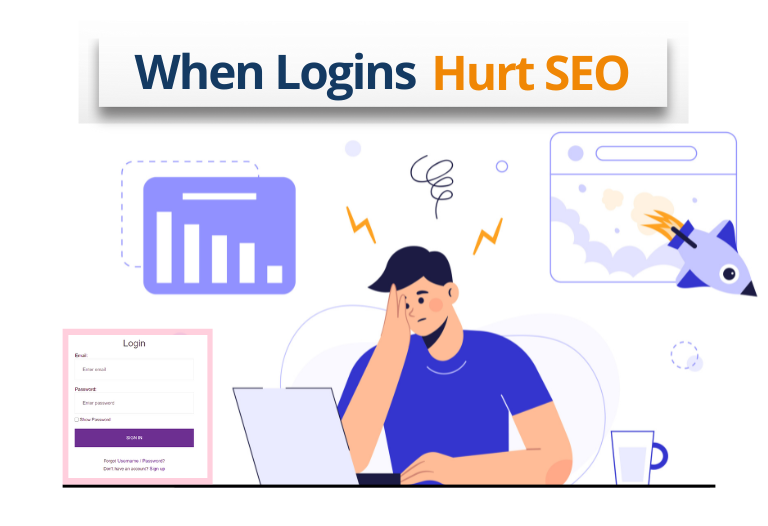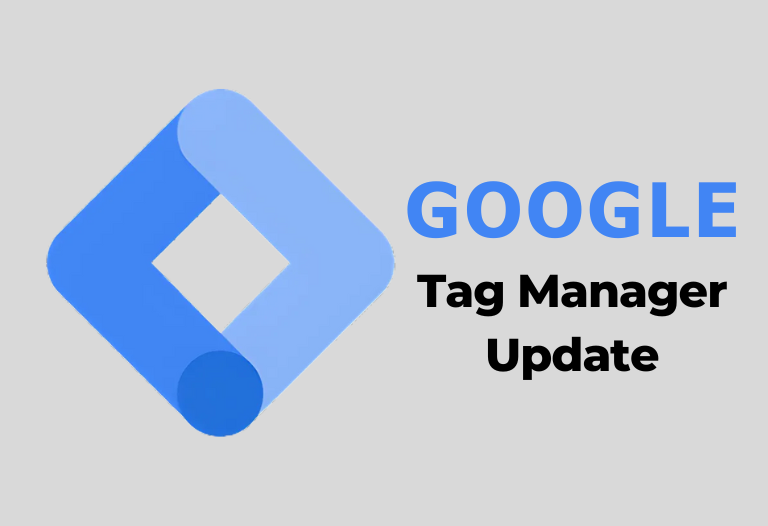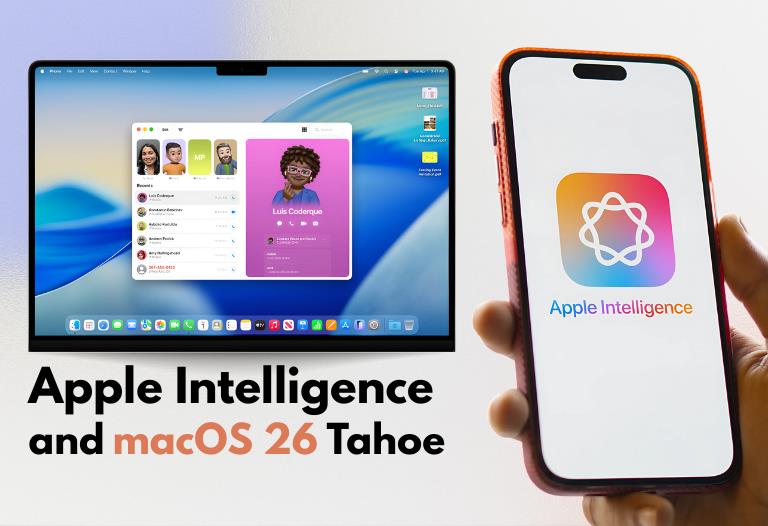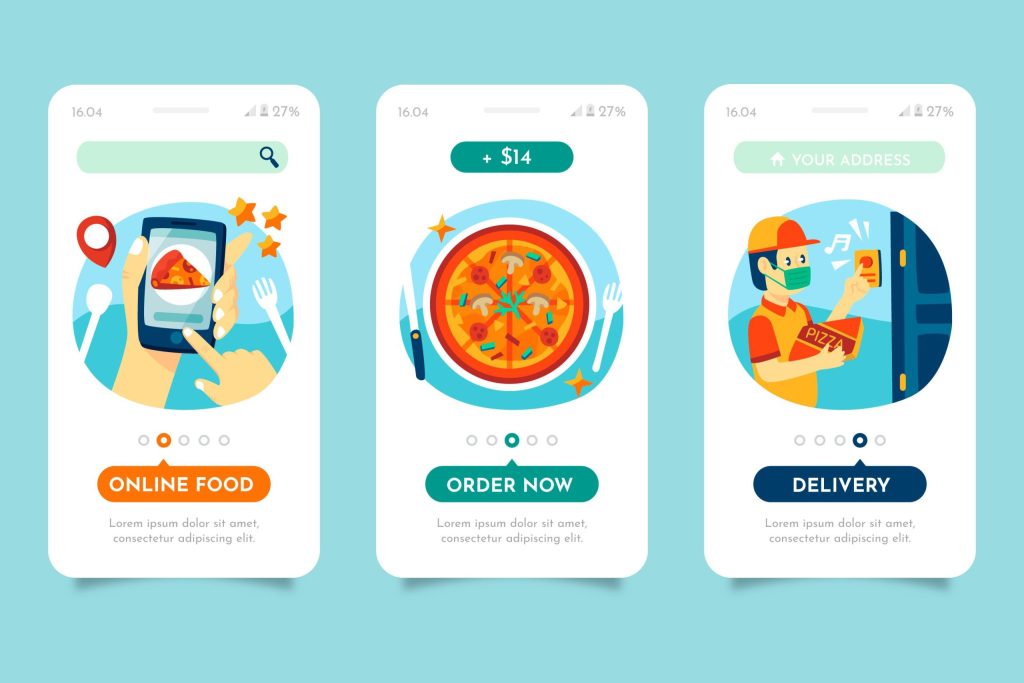
Introduction Guide to Restaurant App Development
The restaurant business is only one of several sectors undergoing digital revolution. The restaurant industry has flourished because of the widespread use of food delivery applications. Owners of restaurants are gradually coming to understand how important a mobile app is to generating income for their establishment. You may manage your employees, customers, orders, sales, and other areas of your restaurant with the use of restaurant applications.
A specific mobile app for restaurants accomplishes several goals, such as informing patrons of the opening of a new branch, initiating a new promotion, adding a new course to the e-menu, and providing any restaurant-related updates. The client base is the foundation of any restaurant business, and it grows when you keep the people you already have while attracting new ones.
Restaurant owners may grow their clientele and increase revenue with improved customer experiences and engagement. It is only feasible, though, if restaurant mobile apps incorporate incredible food delivery app features that elevate customer experiences. Creating a custom restaurant app is a very wise move if you want to maintain a competitive advantage in the digital market.
This guide offers insights into the future of restaurant app development, the significance of strategic vision, and essential elements of restaurant apps.
Key Features Every Successful Restaurant App Should Have
Here is a list of the characteristics that set your restaurant app apart. The functionality of the app could change based on your business model and niche. Here, we have outlined the essential components of a successful online meal-ordering system that consumers will demand:
-
Building relationships and providing loyalty, rewards, and discount programs
A company that prioritizes its customers will always try to give the thoughtfully designed loyalty program greater thought. This guarantees an increase in both the volume of transactions and client engagement.
-
Online ordering and mobile payments
You should consider offering your restaurant’s mobile app with online ordering. Majority of customers place their meal orders using a smartphone. Customers can also avoid standing in large lines at their preferred restaurant by ordering online. The mobile app also improves order handling accuracy and efficiency. Push notification alerts are essential features.
-
Make a Table Reservation
For the restaurant app to truly alleviate the frustration of customers being unable to schedule a visit to their preferred restaurant, a table reservation feature is a must. Pre ordering is a crucial component of the restaurant’s mobile app, guaranteeing you a 60% speedier meal with no waiting time.
-
Integration of Social Media
Social media integration has become a must for any business in this day of digitization. Typically, images are posted to social media platforms like Facebook, Instagram, and Snap chat, allowing customers to share their experiences.
-
Portal for Customer Feedback
The app will provide a customer feedback platform where users may discuss their experiences. Subsequently, the app’s functionality and user experience can be further enhanced by using these experiences and customer expectations.
-
Online Food Tracking
Users and administrators can monitor the status of their orders online with this functionality. Users are reassured about their orders by the real-time tracking of the delivery staff’s position and the status of their food orders. With this functionality, you can quickly notify users about the progress of their orders through push notifications and provide the delivery partner’s details.
-
Order scheduling or fast ordering
Your customer can place a fast order by adding their favorite foods or previously ordered dishes straight to the cart with the use of a rapid order function. It multiplies the benefits of the consumer experience.
Choose the Right Technology Stack for Your Restaurant App Development
An excellent app can make all the difference in the highly competitive restaurant industry. Selecting the appropriate technology stack is essential for stable app performance, scalability, and user happiness. These are some tips to help you with the choosing process.
Frontend Development: Choose frameworks that are renowned for their speed and responsiveness because user experience is crucial. For cross-platform app development, React Native is a well-liked option since it offers a native experience and permits code reuse on both the iOS and Android platforms. Apps may be created for both the iOS and Android platforms with the same codebase, saving time and money. Additionally, React Native guarantees device-to-device UI consistency, giving users a smooth experience.
Backend Development: To manage operations effectively, your program needs a strong backend. Because of its event-driven architecture, Node.js is ideally suited for restaurant apps that handle a lot of traffic. It excels at handling concurrent requests. Another strong choice for quick development and simple maintenance is Ruby on Rails.
Database: A database ought to facilitate sophisticated searches and provide speedy data retrieval. Because of its strong data management features, PostgreSQL is a dependable option for transactional systems like restaurant apps.
Cloud Service: Scalability and dependability are provided by cloud-based systems such as AWS and Google Cloud. Their range of services guarantees that your application will function smoothly even during busy times. These services include processing power, database storage, content delivery, and more.
APIs and Integrations: To improve functionality, consider APIs for social media, geolocation, and payment gateways. Security, dependability, and quick data processing are requirements for these interfaces.
Comparing Native vs. Cross-Platform Development for Restaurant Apps
Adherence to platform-specific UI/UX standards, access to all native APIs and device features, and increased speed and fluidity are among the benefits of native programming. These advantages do, however, come at a price: developing and maintaining distinct apps for each platform is more expensive and takes longer.
The affordability and shorter development cycle of cross-platform development are its strongest points. It is perfect for companies looking to enter the market quickly and with less initial capital. Notwithstanding these benefits, cross-platform applications may not feel as “native” to the user as they should, suffer with intricate animations, and may lag in performance.
When it comes to creating apps for restaurants, the decision between creating a native or cross-platform app is crucial. Native apps are tailor-made for a specific platform, like iOS or Android. They use platform-specific programming languages and tools, which ensure they perform at their best, can be highly customized, and blend in perfectly with the device’s operating system.
Although native applications perform better and offer a smoother user experience, developing one can be more expensive. On the other hand, cross-platform apps are more reasonably priced and may be able to reach a wider audience; nevertheless, the platform they are used on may have an impact on their functionality and visual attractiveness. Restaurants attempting to make an online presence should prioritize whether offering top-notch customer service or breaking into the market more swiftly and cheaply is more important to them than anything else.
How Mobile Apps Are Revolutionizing the Restaurant Industry?
Every business has been transformed by mobile app technology, from ordering takeout to booking taxis. The internet and the availability of apps have led to advances in mobile apps that are revolutionizing various industries, particularly the food industry by providing improved customer assistance and interaction.
The most well-known foodie apps are well-known throughout the globe, and they have revolutionized the expansion of the food sector by facilitating quicker and simpler meal delivery. The greatest food delivery apps, which bring about the greatest innovation in the industry, are being produced by Indian mobile app development companies. In Western markets, food apps such as Postmates and Deliveroo are driving figures. These businesses are primarily focused on developing a new market for quick and simple meal delivery in cities.
-
Hassle-free Ordering and Delivery
The ease of ordering and delivery services is one of the most obvious ways that mobile apps have revolutionized the food industry. Customers can now effortlessly explore menus, make orders, and track deliveries from their favorite restaurants with the help of apps like Swiggy, Zomato, and Uber Eats. By reaching a wider audience, this flawless experience has not only raised customer happiness but also created new revenue streams for restaurants.
-
Growth of Food Delivery Apps Globally
By 2028, the food delivery industry is expected to achieve $4.43 trillion globally, indicating a growth rate of 9.9% for the period the period 2021- 2028. The market touched $2.52 trillion in 2021 demonstrating the food delivery industry’s robust expansion.
-
Food Delivery Sector Revenue Generation
By 2027, it is anticipated that the worldwide online meal delivery market will generate $329.7 billion in sales. This growth trend shows how much room there is for enterprises to gain a sizable portion of the market.
-
Trends in Mobile App Usage
Globally, there were around $717 million downloaded food and drink-related mobile apps as of 2022. This figure illustrates how people are using mobile applications more and more for food-related tasks, such as placing meal orders and trying out new restaurants.
Security Considerations in Developing a Restaurant Mobile App
When managing client data and payment information in restaurant mobile apps, strong security measures are crucial. These are some of the causes:
Protection of Customer Data: Customer data is extremely sensitive and includes payment information and personal information. Any compromise of this data could cause the restaurant serious financial losses as well as harm to its brand. Restaurants may safeguard this information and keep the trust of their patrons by putting strong security measures in place.
Preventing Fraud: Payment card details are a common target for online fraudsters. Restaurants can stop fraudulent transactions and shield their patrons from financial damage by safeguarding this data.
Preserving Integrity: To operate correctly and offer a flawless user experience, a mobile app for restaurants needs to preserve its integrity. Sturdy security protocols guarantee that the application is impervious to intrusions, averting disruptions and preserving the app’s dependability.
Building Trust: If patrons believe their data is secure, they are more inclined to use and keep using a restaurant’s mobile app. Sturdy security protocols contribute to this trust.
In addition to being necessary for legal and regulatory compliance, strong security measures are also essential for upholding consumer confidence and the general integrity of the restaurant’s mobile app. It is an essential component of any fruitful mobile app strategy for restaurants.
Top Trends in Restaurant App Development for 2024
These are the upcoming trends in restaurant app development that have the potential to elevate your brand.
-
Cloud Kitchen
Cloud kitchens are becoming popular among entrepreneurs who want to get into the food delivery business. With this approach, business owners can oversee their food delivery services without requiring additional space for seating. The cloud or “ghost kitchen” market is expected to grow to USD 117.89 billion by 2031, according to market research.
-
Drones for Food Delivery
Drone food delivery is one of the most creative ways to support the expansion of the sector. This idea is well-liked since it frees up traffic, enables quicker delivery, and permits the company to hire more workers to distribute food.
-
Delivery via Contactless Method
Another commercial innovation that all food delivery services have adopted since the outbreak is contactless delivery. Both drivers and customers benefit from the safer and more convenient delivery process.
-
Using a Smartwatch to order food
In the restaurant delivery business, smartwatch ordering is becoming more and more common as a practical, hands-free method for patrons to place and monitor their orders.
-
Subscription for Delivery
Within the food delivery sector, delivery subscriptions have become increasingly common. They provide scheduled and discounted delivery as a convenience to their consumers.
-
AR/VR-enabled immersive Menu Experiences
Customers’ use and interaction with meal delivery applications have changed dramatically because of augmented reality (AR) and virtual reality (VR). Thanks to these technologies, customers can now picture their meals on their smartphones and enjoy an immersive experience with the food menu. By virtually transporting customers to restaurant locations, virtual reality (VR) improves the experience by giving them a sense of presence while they browse the menu.
How can Primotech help in Restaurant App Development?
Having a well-defined strategic goal is essential for the successful development of restaurant apps.
Restaurants may guarantee effective development and align their objectives, financial plan, and project scope by establishing a clear roadmap early on. In this phase of decision-making, planning, and research are essential. In addition, this stage ought to include the platform’s design, payment integration, user experience, and client feedback.
With several successful app launches, we at Primotech have extensive experience and knowledge in restaurant app development. Our team’s broad industry expertise enables us to unlock new revenue streams and transform businesses through mobile technology. We follow a comprehensive Discovery Process that enables us to understand our client’s business objectives, target audience, and unique requirements. This collaborative approach ensures that the resulting app meets and exceeds expectations, providing restaurants with a competitive edge.
The Primotech team has years of expertise in developing React Native apps, working with clients in a variety of sectors to create reliable and profitable applications. We develop customized solutions that increase customer interaction, optimize operations, and increase income by comprehending the particular difficulties and demands faced by the restaurant business.
Conclusion
Restaurants need to use mobile apps to remain competitive; they are no longer just an option. Customers can place food orders, book reservations, browse menus, and earn rewards with the ease of a well-thought-out smartphone app.The ability to integrate ordering ahead capabilities into point-of-sale (POS) systems is a significant benefit of restaurant apps. Customers can order ahead of time using this function, which cuts down on wait times and improves convenience.
Studies show that 44% of customers would rather order ahead of time and avoid the line using a restaurant’s mobile app, highlighting how crucial this feature is. Customers’ overall convenience is further enhanced by incorporating seamless payment methods like Apple Pay and Google Pay, which enable rapid and secure purchases.
Mobile applications for restaurants offer you a competitive advantage over rivals and help you establish a reliable, powerful web presence. Apps for restaurants can also be a useful tool for gathering and promptly responding to consumer feedback. Reviews and ratings assist your business in identifying problems and providing timely solutions.




 February 27, 2024
February 27, 2024

